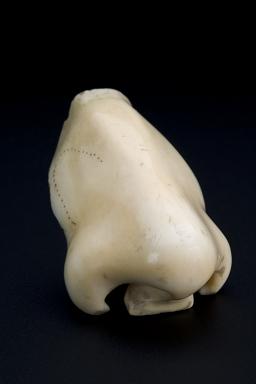Today, analytical chemists are expected to detect even a single molecule using an artificial nose. Researchers from Germany believe that they have made a breakthrough in nanotechnology that will make this possible

Today, analytical chemists are expected to identify even a single isolate. In order to succeed in such sensitive "detective" work, nano-scientists have developed tiny strings that create a resonance of a distinct nature. If a certain froda settles on one of these strings, then it becomes heavier and its oscillations slow down and this change is measurable. However, until recently, such "nano-electromechanical systems" ("nano-electromechanical systems", NEMS) had only limited practical applications.
Physicists from the University of Munich in Germany (LMU) brought about a breakthrough in this field: they built a system of nanostrings composed of a material that does not conduct electricity, with each string capable of being electrically excited individually. Thousands of such strings can be placed on a tiny chip. One of the devices that will be made from this system is an "artificial nose" with high sensitivity that will be able to identify a variety of particles - pollutants for example - individually.
This new system could also be used in a wide variety of other applications - for example, it could produce tiny pulses in clocks included in mobile phones.
Rapid, certain and inexpensive identification of a single isolate is now becoming a feasible task in the hands of analytical chemists. Fortunately, there is a method they can use to meet this task, and which is based on nanotechnology: a nanoelectromechanical system. These systems are based on strings with a diameter of one hundred nanometers - about one-fifth the width of a human hair - that can be electrically excited so that they vibrate at a certain frequency. If these strings will be coated with the appropriate type of chemicals then different animals will be able to settle on them. In a more specific way - only one type of frets can be placed on each string separately.
When the female settles on her corresponding vibrating string, the string becomes slightly heavier and therefore its oscillation becomes slightly slower. "By measuring the oscillation cycle we are able to identify the particular chemical substance at a molecular level of precision," explains researcher Quirin Unterreithmeier, the first author of the article describing the aforementioned study. "In an optimal way, it is possible to produce a tiny chip the size of a fingernail to which several thousand such strings are connected, with each and every one of them very selectively identifying only one type of frog - so that an "artificial nose" with the highest sensitivity can be built."
Until today, the preparation of such systems was technically limited - the main problem was the production and measurement of the string vibrations. It is true that the nanostrings can be vibrated using magneto-mechanical, piezoelectric or electro-thermal excitation, but these methods only work when the nanostrings are made of metal, or at least coated with metal, which considerably dims the rate of oscillations, a fact that prevents sensitive measurement . Such less sensitive systems do not allow the identification of a single breed. Also, it is more difficult to distinguish between the different signals that arise from different vibrating strings.
The new method developed long ago overcomes these bumps. A team of researchers from the University of Munich succeeded in building a system in which the nanostrings are individually excited by dielectric (non-conductive) activity - the same phenomenon that causes hair to stand on end on a winter's day. Based on this physical principle, the nanostrings, composed of non-conducting silicon nitride, are induced to vibrate when exposed to an oscillating non-uniform electric field and then their oscillations can be measured.
The alternating electric field required for this excitation is created between two gold electrodes located very close to the string itself. The oscillations themselves are measured by two other electrodes. "We built the above array using etching methods," explains one of the researchers. "But it was easy to do - even duplicate it thousands of times on the same chip. The next step was the need to ensure that each string can be electrically excited separately, individually." All in all, this should be a simple technical task - but one that will enable a breakthrough in chemical detection. Furthermore, there are many other applications that can be developed beyond this "artificial nose". Among other things, these nanostrings can be used as pulse generators in mobile phone clocks, for example. These innovative resonators (resonators, devices for amplifying sound by resonance) could even be used as particularly selective electrical signal filters in metrological systems (of the theory of weights and measures), such as molecular balances.
The original news of the university
More on the subject on the science website

4 תגובות
Basically Yes.
A dog has more olfactory sensors and in addition about a quarter of its brain is devoted to analyzing smells.
But it all depends on how many sensors we put in and how much we increase the power we get.
German researchers:) nose and sense experts.
Exhausted the Jewish nose now move on to research and applications with the artificial nose.
"I don't know whether to laugh or cry, so ha ha." It smells of something anyway.
Question - Will such a nose be more sensitive than a dog's nose? Because the sense of smell of certain breeds of dogs has always been described as something really fantastic, dogs that are able to detect individual traces of a drug, or an explosive or a person's scent trail even when he is driving a car on a highway (they showed such a demonstration on a TV show not long ago!) Should be more sensitive and efficient than a dog's nose?
Smells bad